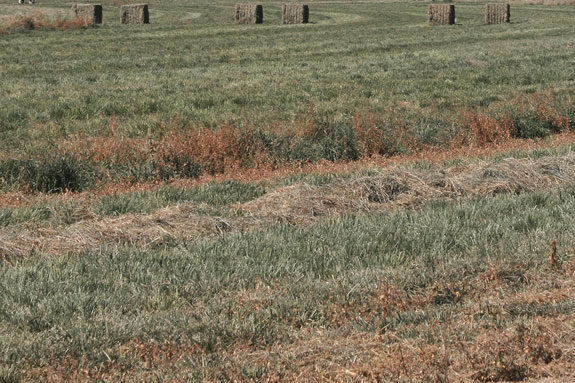However, grasses are better able to extract potassium from low-K soils. Low soil K does not affect the quality of forages in terms of TDN and ADF, but it certainly can decrease overall yields, especially in stressful growing conditions.
Soils with high potassium levels can result in “luxury” uptake by most forages, including grasses, resulting in high-K forage when fed or grazed. Low-K forages are useful in pre-calving transition diets on dairy operations to avoid hypocalcemia in early lactation, and can sometimes be sold at a premium price.
Hay and pasture performance has been hurt by drought this year across Michigan. Most of the northern areas have received more timely rain in late June and early July, but the damage has already been done and 2012 yields are badly reduced.
Southern Michigan and most of the greater Midwest remain in the grip of a serious drought. If soil test information is available for your fields and pastures, check the potassium level on fields and pastures most severely affected by drought. Compare performance with fields that have adequate potassium levels.
In less stressful years, hay and pasture producers may get by with skimpy fertilizer applications. Everyone knows that nitrogen gives the best “bang for the buck” on grass hay and pasture. However, a drought year, hard winter or some other extreme stress factor can bring other management practices, including potassium management, into focus.
Farmers should have reasonably accurate estimates of forage yield and fertilize accordingly. It is also important to soil test periodically to get accurate plant nutrient availability information. Developing a strategy for potassium management can include adjustments to manure application plans, utilization of cover crops to capture and recycle soil K and judicious use of commercial potassium fertilizers.
“Crop removal” information for most Michigan field crops is readily available. If soil K is high enough, potassium fertilization may be deferred for a while as a cost-saving measure. But keep in mind that removing crops without replacing plant nutrients will “draw down” your reserves of available plant nutrients.
Fertilizing to replace nutrients lost by crop removal is a good strategy to maintain current K levels. However, if your K levels are below optimum, then a strategy to build them up should help your future crops better withstand the next drought. FG
—Michigan State University Extension News
Jim Isleib
Michigan State University Extension
PHOTO
Staff photo.











